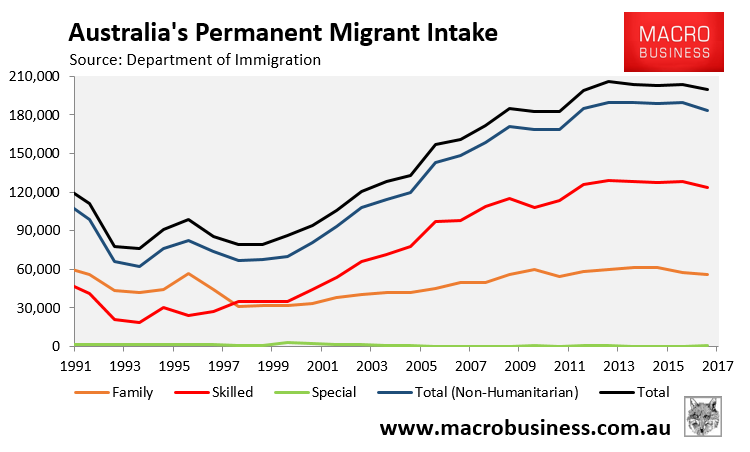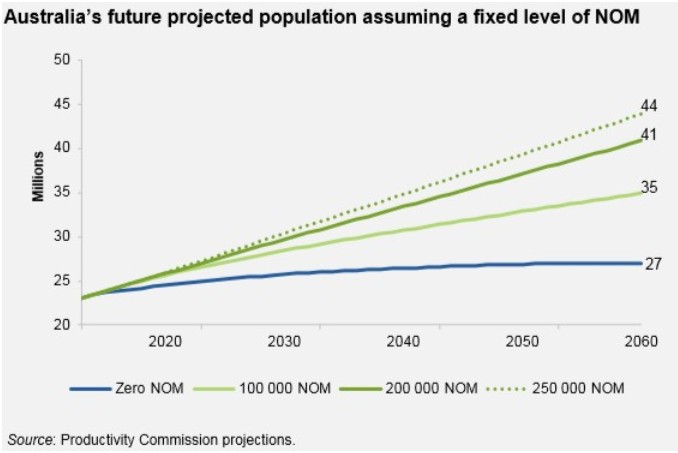When it comes to Australia’s immigration program, you would be hard pressed to find a bigger liar than Treasurer Scott Morrison (see here, here, here, and here).
Yesterday, Morrison again spun a web of lies over Australia’s migrant program to Neil Mitchell on Radio 3AW:
Scott Morrison: “Only two out of 10 people increase in our population levels relates to the permanent immigration intake. Only 2 out of 10. So, the permanent immigration intake is not a big factor when it comes to population growth… Natural increase and temporary immigration accounts for 80% of population increase”.
You can’t make this stuff up.
Morrison’s claim that permanent migration is only a minor player in Australia’s population growth is patently false and a bald-faced lie.
The 2016 Census revealed that Australia’s population increased by a whopping 1.9 million people (+8.8%) in the five years to 2016, driven by a 1.3 million increase in new migrants:


To add insult to injury, 86% of migrants (1.11 million) settled in Australia’s cities, versus just 14% (187,000) that settled in Australia regional areas.
The permanent migrant intake is the primary driver of Australia’s population increase since, unlike temporary migrants who must ultimately leave, these migrants remain in the country and also have children, thus continually adding to Australia’s population base over time, as shown above.
The fact that most migrants enter Australia initially as temporaries before converting to permanent migrants later is irrelevant. If Australia slashed the permanent migrant intake it would have a three-pronged impact on reducing population growth:
- It would reduce the flow of temporary migrants, since many migrants enter Australia on temporary visas first hoping to transition to one of the many permanent non-humanitarian visas handed out each year (capped at 190,000). Reducing the number of permanent visas reduces the probability of gaining permanent residency and, therefore, the incentive to come to Australia in the first place.
- The temporary migrants that cannot transition to permanent residency because the permanent intake has been cut would have to leave Australia, thus lowering net overseas migration (NOM) and population growth.
- Fewer permanent residencies means less migrants having children, thereby reducing natural increase as well.
Indeed, the Productivity Commission has noted that “temporary migration is an established pathway to permanent migration” and that “around half of all permanent visa grants went to people already in Australia on a temporary visa”.
The fact of the matter is that Australia’s permanent migration program is the primary driver of both NOM and Australia’s overall population growth.

Therefore, if the permanent migrant intake was hypothetically reduced to zero, then temporary migrants would have to leave, inflows would roughly match outflows (over the longer-term), and NOM and by extension Australia’s population would barely increase:

Stop lying Scott.

